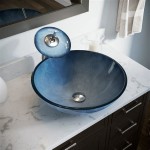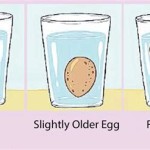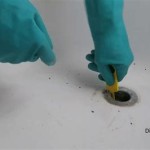Kitchen Sink Clogged: What To Do When Water Won't Drain
A clogged kitchen sink is a common household plumbing issue. It disrupts daily routines, making tasks like washing dishes and food preparation inconvenient. Understanding the causes of a clogged sink and knowing effective troubleshooting steps is crucial for resolving the problem efficiently and preventing future occurrences.
The source of a clogged kitchen sink can vary, but it typically involves a buildup of materials that restrict water flow through the drainpipe. These materials often include food scraps, grease, hair, soap scum, and other debris that accumulate over time. Understanding the common culprits allows for targeted preventative measures and more effective unclogging techniques.
Before resorting to harsh chemicals or calling a plumber, several DIY methods can often clear a clogged kitchen sink. These approaches range from simple solutions using household items to more involved techniques that require basic plumbing tools. The following sections outline various troubleshooting steps, starting with the simplest and progressing to more complex solutions.
Assessing the Situation: Identifying the Severity and Location of the Clog
The initial step is to accurately assess the situation. Observe how quickly the water is draining (or not draining) and whether the water is backing up into one or both sides of a double sink. If water is draining very slowly, the clog is likely partial and might be cleared with a simpler method. If the sink is completely full and not draining at all, the clog is more severe and may require a more aggressive approach.
Check other drains in the house, particularly in bathrooms or nearby sinks. If multiple drains are clogged simultaneously, the problem could be further down the main drain line, suggesting a more significant issue that might require professional help. A single clogged kitchen sink usually indicates a localized problem within the kitchen plumbing.
Consider when the clog started and what might have contributed to it. Recalling if a large amount of food waste, grease, or other substances went down the drain recently can provide clues about the nature of the blockage. This information can help in selecting the most appropriate unclogging method.
Initial Troubleshooting Steps: Hot Water, Plunger, and Baking Soda/Vinegar
Hot Water: The simplest solution, and first line of defense, is to pour a kettle of boiling water down the drain. This is most effective for clogs caused by grease, which melts at high temperatures. Ensure the sink material can withstand boiling water; some older porcelain sinks can crack. Let the hot water sit for a few minutes before running the tap to see if the drain clears. Repeat if necessary.
Plunger: A standard cup plunger is often effective for dislodging clogs. Ensure there is enough water in the sink to cover the cup of the plunger. Create a tight seal around the drain opening and plunge vigorously up and down for several minutes. Remove the plunger to see if the water drains. Repeat this process several times. For double sinks, seal off the other drain opening with a wet cloth or a second plunger to create a stronger vacuum.
Baking Soda and Vinegar: This natural solution can dissolve many types of clogs. Pour about one cup of baking soda down the drain, followed by one cup of white vinegar. The mixture will fizz and bubble. Let it sit for about 30 minutes, then flush with hot water. The chemical reaction helps break down grease and other organic materials. This method is often effective for minor clogs and is a safer alternative to harsh chemical drain cleaners.
Repeat these steps multiple times before moving on to more advanced methods. Sometimes, persistent effort with these simple techniques is all that's needed to clear the clog.
Investigating Further: Checking the P-Trap and Using a Plumbing Snake
If the initial troubleshooting steps fail, the clog might be located within the P-trap, the curved section of pipe under the sink. This section is designed to trap debris and prevent sewer gases from entering the house, but it can also become a primary source of clogs.
Removing and Cleaning the P-Trap: Place a bucket under the P-trap to catch any water and debris. Use a wrench to loosen the slip nuts that connect the P-trap to the drain pipes. Carefully remove the P-trap and empty its contents into the bucket. Inspect the P-trap for any visible obstructions and remove them. Clean the inside of the P-trap thoroughly with a brush or wire. Reassemble the P-trap, ensuring the slip nuts are tightened securely but not overtightened.
Using a Plumbing Snake: A plumbing snake, also known as an auger, is a flexible tool that can reach further down the drainpipe to break up or retrieve clogs. Insert the snake into the drain opening and carefully push it down the drainpipe, rotating the handle to help it navigate the bends. If you encounter resistance, continue to rotate the handle and push gently to break through the clog. Once you feel the clog has been cleared, retract the snake and clean off any debris. Run hot water down the drain to flush away any remaining particles.
When using a plumbing snake, exercise caution to avoid damaging the drainpipe. Apply gentle pressure and avoid forcing the snake, especially in older plumbing systems. A plumbing snake can be purchased at most hardware stores and is a worthwhile investment for homeowners.
After using either the P-trap removal or plumbing snake method, reassemble the plumbing and test the drain by running water. If the drain still remains clogged, proceed to more advanced troubleshooting or consider contacting a plumbing professional for assistance.
Consider wearing gloves when dealing with drain cleaning as the water and debris can contain bacteria and unpleasant materials. Safety precautions are essential to avoid potential health risks.
Proper disposal of the debris extracted from the drain is also important. Avoid flushing the debris down the toilet, as this can cause additional plumbing problems. Dispose of the debris properly in a trash bin.
If persistent clogging remains a recurring issue, consider installing strainers or drain guards to prevent large food particles and other debris from entering the drain. Regularly cleaning the strainers will help maintain proper drainage and reduce the likelihood of clogs forming.
Avoid pouring grease down the drain. Instead, collect grease in a container and dispose of it properly in the trash. Grease solidifies as it cools and can quickly accumulate in the drainpipes, leading to stubborn clogs.
Periodically flush the drain with hot water and a mild detergent to help prevent buildup. This preventative measure can help keep the drain clear and reduce the frequency of clogs.
Consider the type of soap used for washing dishes. Some soaps can leave behind a residue that contributes to clogs. Using a soap that is formulated to break down grease effectively can help minimize the buildup of soap scum in the drainpipes.
Educating all household members about proper drain maintenance is crucial for preventing clogs. Encourage everyone to avoid pouring grease, food scraps, and other debris down the drain.
Regularly inspect the plumbing under the sink for leaks or other problems. Addressing minor issues promptly can prevent them from escalating into more serious problems, such as clogs or water damage.
Consider installing a garbage disposal unit if the sink experiences frequent clogs due to food waste. A garbage disposal can grind up food particles into smaller pieces, making them less likely to cause clogs in the drainpipes. However, it is still important to avoid putting large quantities of food waste down the garbage disposal at once, as this can overload the system and cause clogs.
If all DIY methods fail to resolve the clog, it is advisable to contact a qualified plumbing professional. A plumber has the expertise and tools to diagnose and resolve complex plumbing issues safely and effectively. Attempting to force a solution or use inappropriate cleaning methods can potentially damage the plumbing system and lead to more costly repairs.

How To Unclog A Kitchen Sink Drain

How To Unclog A Kitchen Sink Family Handyman

How To Unclog A Sink 5 Natural Easy Ways Kitchen Cabinet Kings

How To Unclog A Kitchen Sink Drain

Common Causes For A Clogged Sink Brubaker Inc

How To Unclog A Kitchen Sink Using Baking Soda And Vinegar

How To Unclog A Sink Herrmann Services

How To Unclog A Kitchen Sink Drain

How To Unblock A Kitchen Sink 7 Methods Qs

Slow Sink Drain Kitchen Not The Trap







